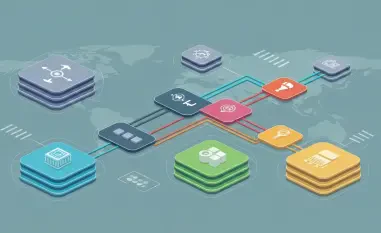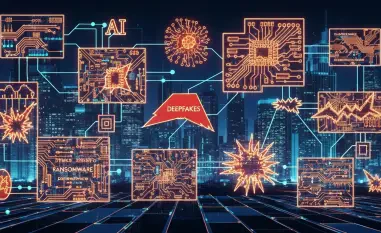In an era where cyber threats grow more sophisticated by the day, a startling reality has emerged: the most significant vulnerabilities in cybersecurity often stem not from external attackers, but from internal shortcomings within organizations. Despite advancements in technology, many companies find themselves grappling with persistent gaps in fundamental security practices and a workforce debilitated by chronic burnout. These twin challenges create a perfect storm, leaving defenses fragile against ransomware and other evolving threats. While cutting-edge tools and solutions are vital, they alone cannot address the structural weaknesses and human toll that undermine resilience. This pressing issue demands a closer look at how incomplete security basics and exhausted teams are amplifying risks in the digital landscape, urging a shift toward a more balanced approach that prioritizes both technical discipline and employee well-being for sustainable protection.
Gaps in Security Fundamentals Expose Critical Weaknesses
The foundation of robust cybersecurity lies in mastering essential controls, yet many organizations struggle to implement these basics consistently. Practices such as identity access management, email security, endpoint visibility, and network segmentation form the bedrock of defense, but gaps in these areas remain alarmingly common. A comprehensive study highlights that even as cyber threats become more complex, numerous companies fail to enforce these critical measures, resulting in fragmented systems that attackers can easily exploit. This isn’t merely a matter of oversight; it reflects a broader tendency to prioritize flashy, advanced solutions over the disciplined maintenance of core protections. Without a solid baseline, even the most innovative tools lose effectiveness, leaving organizations exposed to preventable risks that could be mitigated through focused effort on these fundamental practices.
Beyond the technical lapses, the consequences of neglecting security basics ripple across entire systems, creating cascading vulnerabilities. When foundational measures like timely patching or proper network segmentation are ignored, small entry points for attackers can quickly escalate into major breaches. This issue is compounded by a lack of visibility into assets and endpoints, making it difficult for teams to detect and respond to threats in real time. The reality is that cyber resilience depends not on the latest gadgets, but on a commitment to maintaining these essential controls with precision. Until organizations shift their mindset to value consistency over novelty, they will continue to face avoidable risks, as adversaries exploit the same weaknesses that have persisted for years despite clear guidance on how to address them.
Human Toll of Burnout Weakens Incident Response
Equally damaging to cybersecurity efforts is the pervasive burnout among IT and security professionals, a crisis driven by relentless pressure and inadequate support. A global survey of thousands of industry workers reveals a workforce battling alert overload, escalating threats, and chronic understaffing, all of which contribute to emotional exhaustion and diminished focus. These conditions directly impair the ability to manage incidents effectively, as fatigued teams miss critical alerts or delay vital tasks like system updates. The human cost of this vigilance is steep, with professionals struggling to keep pace in an environment that demands constant attention, often without sufficient resources or rest. This exhaustion isn’t just a personal issue; it translates into tangible risks for organizations as response times slow and errors increase under the strain.
Addressing this human factor requires more than sympathy; it demands actionable strategies to alleviate the burden on cybersecurity staff. Solutions like Managed Detection and Response (MDR) services offer a lifeline by providing 24/7 monitoring and expertise, reducing the load on in-house teams. However, outsourcing alone isn’t enough—organizations must also foster sustainable work environments by ensuring adequate staffing and promoting balance to prevent fatigue from taking root. The link between burnout and weakened defenses is undeniable, as tired professionals cannot maintain the vigilance needed to counter sophisticated threats. By investing in their people with the same urgency as they do in technology, companies can rebuild the human resilience necessary to uphold strong security postures in an increasingly hostile digital world.
Building a Holistic Defense for Lasting Resilience
Looking back, the dual crisis of missing security fundamentals and workforce burnout revealed a stark truth: technology alone couldn’t shield organizations from the evolving cyber threats of the time. The persistent neglect of basic controls had created structural weaknesses that adversaries exploited with ease, while exhausted teams struggled to maintain even well-designed defenses under crushing pressure. Reflecting on these challenges, it became clear that a fragmented approach to cybersecurity was unsustainable. The lessons from this period underscored the need for a unified strategy that addressed both systemic gaps and human limitations with equal seriousness.
Moving forward, organizations were urged to adopt a balanced framework that strengthened resilience on multiple fronts. Prioritizing foundational security practices became a non-negotiable step, alongside investments in tools that supported—not replaced—human effort. Simultaneously, supporting staff through MDR services and better workplace policies emerged as critical to reducing burnout and enhancing response capabilities. This holistic vision, blending disciplined processes with genuine care for people, offered a path to sustainable defense, ensuring that internal strengths matched the sophistication of external threats in the years ahead.













